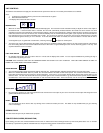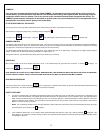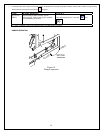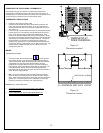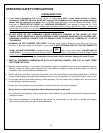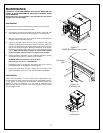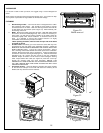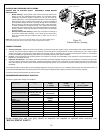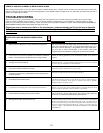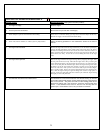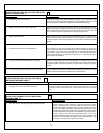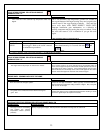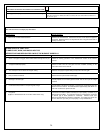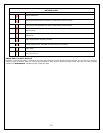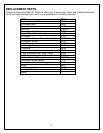
20
REMOVAL AND REPLACEMENT OF BROKEN DOOR GLASS
While wearing leather gloves (or any other gloves suitable for handling broken glass), carefully remove any loose pieces of glass from the door frame.
Dispose of all broken glass properly. Return the damaged glass to your DROLET Dealer for replacement. It is critical that you replace the glass with a
genuine one supplied by your dealer.
TROUBLESHOOTING
When your stove acts up, your first reaction may be to call for help. This guide may save you time and money by enabling you to resolve simple
problems yourself. Problems can be caused by: 1) poor fuel; 2) poor operation or maintenance; 3) poor installation; 4) component failure; 5) factory
defect. You can usually solve problems related to 1 and 2. Your dealer can solve problems related to 3, 4 and 5. Refer to ELECTRICAL DIAGRAM and
REPLACEMENT PARTS section to help identify and locate stove parts.
Should you need to contact your dealer or the manufacturer, please photocopy and fill out the form in Appendix
B. Try to answer as many questions as you can. Have it handy when you call. This will help you obtain a much
faster service.
STOVE SHUTS OFF AND SHOWS WARNING CODE
“P”
Possible Causes: Possible Remedies: (Unplug stove first when possible)
1. Airflow pressure switch hose or hose connector tip are blocked.
Pull out air hose from the airflow switch and blow through it. If air flows
freely, the hose and tube are fine. If air will not flow throw the hose, use a
thin wire to clear the blockage. If the problem occurs again shortly after ,
you may have to remove accumulation on the pressure switch probe
located inside of exhaust blower housing(refer to maintenance section)
2. The air inlet, burn pot, interior combustion air chambers, combustion
blower, or exhaust pipe are blocked with ash or foreign material.
Follow all cleaning procedures in the maintenance section of the owner’s
manual.
3. Vent pipe is incorrectly installed.
Check to make sure vent pipe installation meets the criteria in the owner’s manual
as well as the pipe manufacturer’s recommendations.
4. The pressure switch connections are faulty.
Check the connectors attached to the pressure switch.
5. The pressure switch wires are pulled loose from the connectors on
the wiring harness.
Check to see whether the wires are loose at the connectors.
6. Combustion/exhaust blower failure.
This blower must turn on when you start the unit. If it does not, make sure there is
power on the connections. If the power is connected, the motor is probably
defective; if there is no power, see #7.
7. Control board is not sending power to the combustion/exhaust blower.
If there is no power going to the combustion blower, check all connections. If all
wires are properly connected, you have a defective control board.
8. Control board not sending power to pressure switch.
There should be 120-volt going through the pressure switch when the
stove is on. You will need a technician to perform this test.
9. Airflow pressure switch has failed (very rare).
To test the airflow pressure switch, you need to disconnect the air hose from the
blower casing. With the other end still attached to the switch, very gently suck on
the loose end of the hose (you may want to completely disconnect the hose from
the stove and the switch first and make sure it is clear). If you hear a click, the
switch is working. BE CAREFUL: TOO MUCH SUCTION CAN DAMAGE
THE SWITCH.



